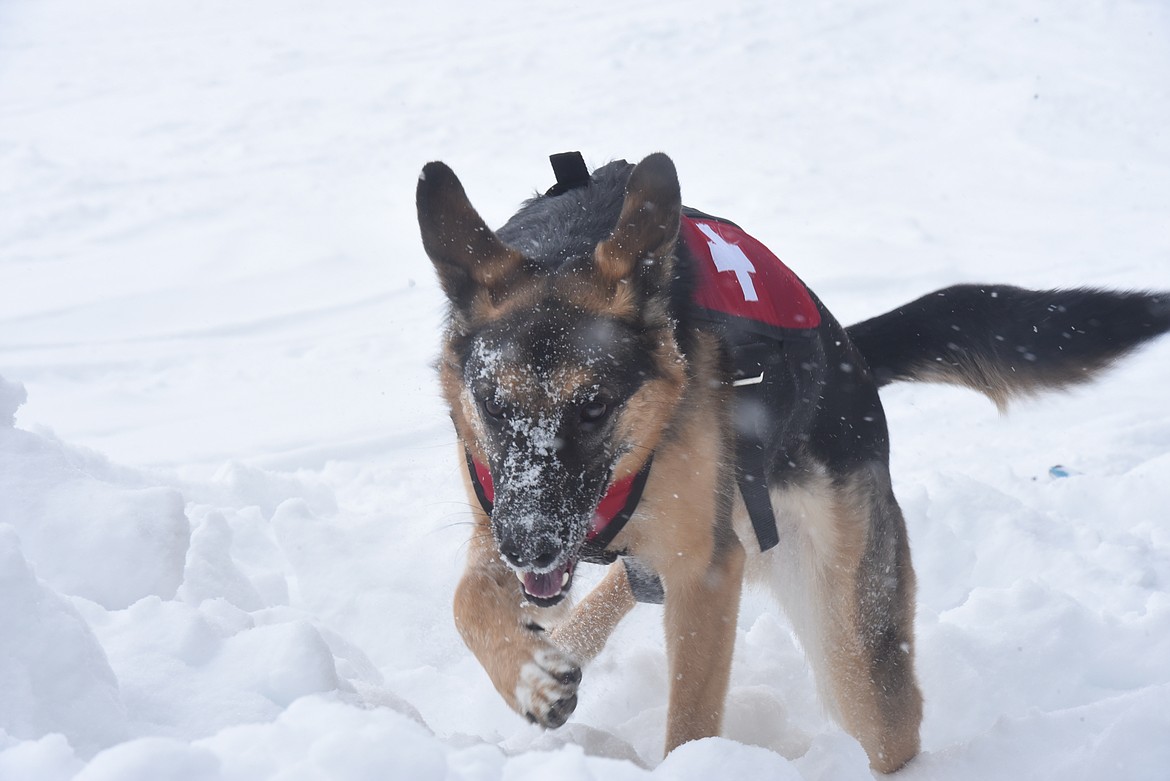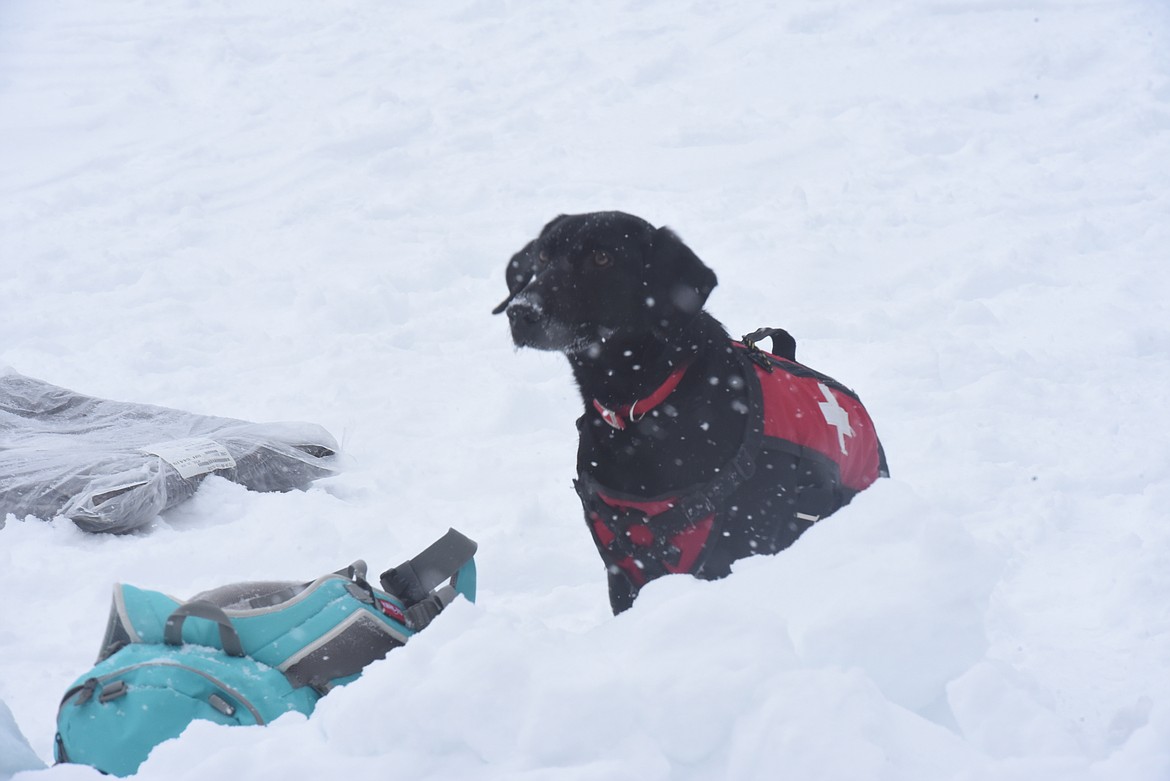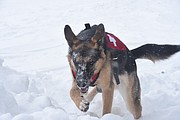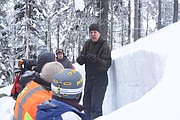Learning how to play safely in the snow
Halfway through the snow season, western states have already surpassed the national annual avalanche death average.
As of Feb. 22, slides this winter have killed 31 people — including two in Montana — according to the Colorado Avalanche Information Center. Over the past 10 years, the center has recorded a national average of 27 deaths.
The first week of February saw 15 deaths, the most avalanche fatalities in that timeframe in more than a century.
“In the snow world, everybody thinks everything’s going to be great because snow is fun,” said Terry Crooks, David Thompson Search and Rescue volunteer. “But the snow doesn’t play favorites.”
Winter recreationists who enjoy the mountains — particularly backcountry skiers, snowboarders, snowmobilers, snowshoers, climbers and hikers — are at risk of dying in avalanches.
As part of their annual effort to educate Lincoln County residents on how to avoid the perils of the snow world, DTSR volunteers held their avalanche safety course at Turner Mountain last weekend.
When venturing out into avalanche-prone terrain, outdoor enthusiasts should take three essential steps:
Forecast check
Backcountry explorers can protect themselves from slides before hitting the road by checking the avalanche forecast for their area on avalanche.org. The website provides a map with ratings — from low to extreme danger — for conditions in mountainous regions throughout the country. Users can get more detailed forecasts by clicking on areas highlighted on the map.
Gear up
Having the proper equipment can mean the difference between life and death when an avalanche strikes.
The first piece of gear every mountain recreationist should invest in is a shovel, according to Jon Jeresek, DTSR volunteer. On average, avalanches cover victims with four feet of snow. A buried person often only has between 15 to 30 minutes before they die of asphyxiation. To get to a victim within that time frame, a good shovel is essential.
After purchasing a shovel, Jeresek said recreationists should invest in transceivers — devices that are worn on the body and can both emit and receive radio beacons used for rescues. Users should keep their transceivers on for as long as they remain in avalanche territory.
When searching for a victim with a transceiver, a rescuer should keep their transceiver close to snow to get the most accurate reading. As the searcher approaches a buried transceiver, the beeps from their device will become more frequent.
It's also important to keep a transceiver at least a meter away from any other devices that might cause interference; a rescuer should put their cell phone in their pack and be wary of any magnets in their clothing.
Armed with both a shovel and a transceiver, a recreationist should then purchase a probe. A probe is a long, slender metal tube that rescuers can drive into the snow to feel for a buried person.
While an inefficient tool for searching for victims, a probe does allow rescuers to quickly confirm if a person is submerged in an area without having to dig a hole. Jeresek told the story of a man who was buried next to a tree in a 2014 avalanche. Rescuers using transceivers zeroed in on the man’s position but dug a hole on the wrong side of the tree. By the time they realized their mistake, the man was dead.
Recreationists can also purchase airbags that help the wearer rise to the top of an avalanche. While expensive, the bags can improve an avalanche victim’s chances of survival.
Get trained
Many avalanche deaths could be avoided if recreationists knew how to spot unsafe conditions. Jeresk said about 95 percent of victims are trapped in avalanches triggered either by themselves or another person in their party.
Checking for recent avalanche activity is one of the best ways to determine if an area is avalanche-prone. Recreationists should also be on the lookout for melting, cracking, collapsed or windblown snow. Heavy rain and snowfall are also indicators of unsafe conditions.
When every second counts for a buried victim, knowing how to use avalanche tools in theory only goes so far. Before heading out into the mountains, recreationists should practice using their transceivers, probes and shovels with each other.
Backcountry explorers should also participate in a safety class before hitting the mountains.
For more information on avalanche safety, visit avalanche.org and check the “Know Before You Go” avalanche awareness program.







